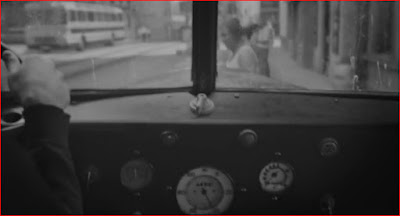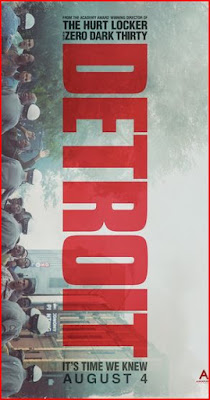John Lee Hancock's biopic probably was doomed at the box office from the start. I'm sure most people, first hearing of the idea, assumed it would be some sort of infomercial for McDonald's. Even the actual screenplay, an ambiguous debunking of Ray Kroc's role as creator of the restaurant chain's global empire, probably struck very few people as compellingly cinematic. It was going to rise or fall on Michael Keaton's performance as Kroc, and once he was denied an Oscar nomination, the film was finished. He and the film were ripped off. Now streaming on Netflix,
The Founder proves one of the best American films of 2016 and an unusually nuanced view of entrepreneurship that manages to educate by entertaining.
In 1954 Ray Kroc is an increasingly frustrated salesman for a milkshake-mixer manufacturer. Rallying himself daily with motivational recordings, Kroc pitches his machines at drive-in restaurants across the country, mostly in vain. Hancock and screenwriter Robert D. Siegel expertly establish Kroc as an impatient man, desperate to make sales and annoyed at the slow service from carhops at most drive-ins. He can hardly credit the news that one restaurant in San Bernadino CA has placed an order for six shake mixers. But if anything, the McDonald brothers, Dick (Nick Offerman) and Mac (John Carroll Lynch) probably could use more of them. Dick has invented the "Speedie System," an assembly line for hamburger and fry preparation, making their burger place a local sensation. Kroc is incredulous at both the speedy service -- he has his order within a minute of placing it -- and the quality of the food. He also likes the atmosphere of the place, or perhaps the absence of the casual "hangout" atmosphere of other restaurants. Even the McDonald's name appeals to him as typically American. With no place or reason for juvenile delinquents to lurk about, McDonald's is the ideal of a "family" restaurant. Kroc becomes convinced that every community in the country should have one.


The title of Hancock's film is deliberately ambiguous. Superficially, it's ironic, if not a lie, because Ray Kroc did not invent the Speedie System or build the first McDonald's restaurant. But he did invent the global McDonald's restaurant chain, against the resistance of the McDonald brothers, whose early experiment in franchising ended early when they could not maintain quality control. Kroc's determination to become a salesman for the Speedie System by spreading franchises clashes quickly with Dick McDonald's stubborn resistance to any compromise of his vision. It would have been too easy for the filmmakers to make Kroc a pure villain, a ruthless exploiter of the Siegel and Shuster of the restaurant business. But Hancock and Siegel are more subtle than that. From one perspective, Dick McDonald is an Ayn Rand hero, the entrepreneur as an artist entitled to absolute authority over his intellectual property, but the filmmakers make it just as easy for audiences to see him as an irrational control freak. And while Dick may think of Kroc as an increasingly-aggressive parasite, the film emphasizes how hard Ray works to make his vision for McDonald's a reality. In a crucial sequence, Kroc recognizes that some of his first franchises in the midwest are going the way the brothers feared from their own experience: deviating from the minimal burgers-and-fries menu, encouraging people to loiter, etc. Ray himself is so dedicated to getting his own place right that he personally sweeps the parking lot at night. He realizes his mistake in offering franchises to absentee investors, rentiers more than entrepreneurs, who are interested only in reaping profits. He turns instead to hustling salesmen like himself. A Jewish salesman hawking Catholic bibles is the type he wants -- and with relative understatement
The Founder emphasizes (unless it fictionalizes) the inclusiveness of Kroc's vision. He recruits in synagogues and at mixed-race gatherings and doesn't appear to discriminate in his hiring. We can't tell the McDonald brothers' attitude on such matters, but we can guess that they weren't bigots from the fact that they're not portrayed as such. Suffice it to say that for Kroc, McDonald's is ideally American because of the opportunity it offers for upward mobility as well as its idealized family atmosphere. By comparison, Dick McDonald, abetted by his sickly brother, sees McDonald's entirely as his (or
their) thing -- and it can only be what he says it is. The film sides with Ray against Dick so long as the main question is: why shouldn't the rest of the country have McDonald's?
Those who did go to
The Founder might feel that the original McDonald's restaurants looked more like a Five Guys or some other 21st century deluxe burger joint than the too-familiar fast-food place that is most likely no one's standard of quality now. Inevitably Kroc has to start the company on the slippery slope, and the moment comes during a fateful stay in Minneapolis, where he meets Joan Smith (Linda Cardellini), a banker's wife for whom Ray will eventually dump his long-suffering first wife, Ethel (Laura Dern). Joan, a nightclub pianist, has a head for business herself, leading a cash-strapped Ray -- he has to give too much of his cut to the brothers -- to an opportunity to save money, ironically enough with a new way to make milkshakes. To Dick McDonald using powdered milk for shakes is an abomination, and the audience might share his revulsion at the cost-cutting compromise, but by now, on the other hand, they might see Dick as an unreasonable rentier with no sympathy for Ray and others in the trenches. The film is deliberately coy about the quality of the powdered shakes, but whether they were good or bad, they hasten the inevitable showdown between Kroc and the McDonalds. Thanks to the
deus (or
demonicus)
ex machina intervention of an eavesdropping lawyer, Ray finds a way to checkmate the brothers, and only at this point does he fully become a villain, kicking them while they're down -- while also buying them out for millions -- as payback for their holding him back so long. By this point, also, audiences may have turned against Kroc for his treatment of Ethel, going all the way back to his mortgaging their home without consulting her. Even here there's an interesting irony in the Krocs' contrasting notions of upward mobility. Ethel is something of a social climber, seeking fulfillment in elitist club memberships among the kind of idling rich Ray comes to despise, while Ray comes to prefer the company to be found in lodge and bingo halls, people presumably of his own kind. Joan is attractive to him not only because she's attractive but because she proves herself the same sort of person -- an imaginative entrepreneur if not a take-no-prisoners corporate buccaneer. In the end, Ray Kroc's most unforgivable act is his failure to live up to a handshake agreement to pay the McDonald brothers millions in annual royalties, but while his refusal -- mentioned only in a text epilogue -- is despicable you can still ask what, exactly the brothers deserved from him. Any final summing up should conclude that Dick McDonald was the necessary but not the sufficient cause of today's McDonald's empire, and there probably would not have been millions in royalties to withhold from him had Dick had his own way from the start. His ultimate defeat may have been unfair, but there's also something of a comeuppance to it, at least in this viewer's eyes.
It's a measure of the seriousness of this film's ambitions, or its limited budget, that a picture set mostly during the 1950s is not infested with oldies on the soundtrack. Instead, Carter Burwell's score aspires to a less time-specific evocation of nostalgia, and while it's fairly generic music I welcomed its relative unobtrusiveness. Another point where I can't tell whether the producers were pinching pennies or showing restraint is a scene where Kroc goes to the movies to see
On the Waterfornt. We neither see a clip or hear any of the soundtrack, and I prefer to see this as heroic resistance to the temptation of beating audiences over the head with Brando's contender speech and its obvious relevance to Ray's situation.
The Founder makes the right choices most of the time, including hiring Michael Keaton, who since
Birdman has surged into the Ben Kingsley zone of automatically watchable character stardom. Between losing his best chance yet at an Oscar to someone impersonating a handicapped person and not even getting a nomination this time, I start to wonder what the Academy has against him. Maybe the more diverse membership will show him some respect the next time they have a chance. He has a terrific tightrope act here, as at any moment Ray Kroc can be a compelling antihero or an outright monster, but Keaton makes barely a bobble. He and
The Founder deserved more than they got at awards time -- tellingly, their only honors came from AARP -- but here's hoping that Netflix helps get them some overdue favorable attention.





















